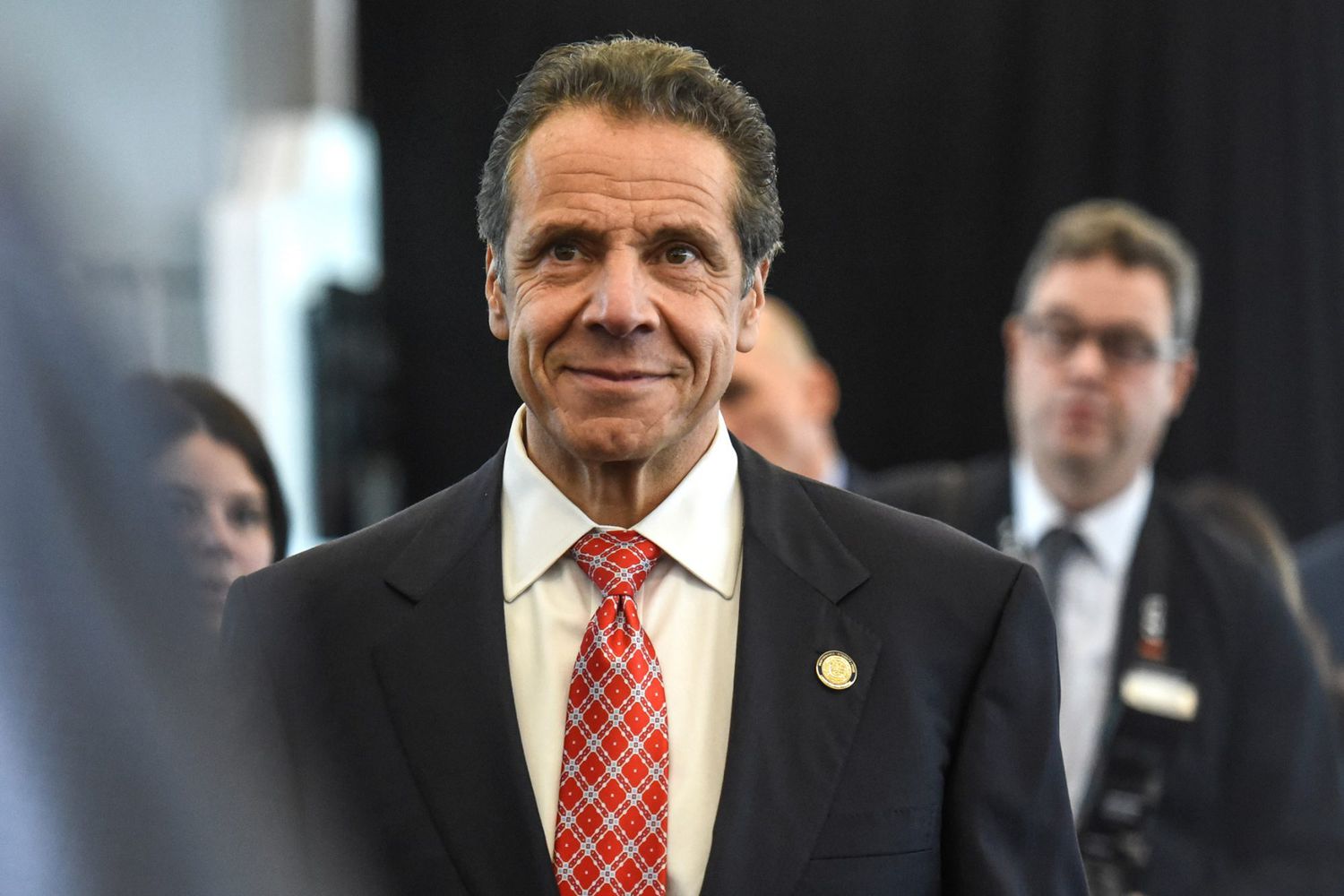Gov. Cuomo Admits 'Mistake' in Releasing Information on Nursing Home COVID Deaths
New York Gov. Andrew Cuomo on Monday acknowledged that his administration made a "mistake" in the way it released information about nursing home deaths amid the novel coronavirus pandemic.
The issue has become a matter of significant controversy, fueled by conservative criticism of Cuomo.
The state's attorney general investigated the statistics as part of a broader probe of how nursing homes handled the pandemic.
Cuomo — who became the country's most visible governor during his daily COVID-19 briefings, which earned him widespread praise — insists the scrutiny over nursing homes is politically motivated and ignores the success New York has had in overcoming the virus.
"To be clear, all the deaths in the nursing homes and in the hospitals were always fully, publicly and accurately reported," he said Monday.
But a Jan. 28 report by New York Attorney General Letitia James found that the way the state's health department categorized nursing-home deaths essentially obscured the true total.
The state, who said it had been auditing the statistics, soon released more data showing nursing home-related deaths of approximately 15,000 rather than the previously reported toll of about 8,500.
At issue was how New York's health department has been categorizing deaths at nursing home fatalities and how those same facilities reported deaths back to the state.
New York has, somewhat controversially, previously only counted the number of nursing home patients who died while at a facility. Residents who died at a hospital after being transferred from a facility were added to another category.
(The health commissioner, Dr. Howard Zucker, last month stressed that the controversy over categorization did not mean the total number of deaths was incorrect.)
James' January report also cited several examples of care facilities reporting one set of numbers to the health department and another to her investigators. Zucker laid some of the blame with the facilities, saying "reporting from nursing homes is inconsistent and often inaccurate."
Nonetheless, he conceded, "the number of people transferred from a nursing home to a hospital is an important data point" and he said officials were auditing that data from nursing homes.
Speaking with reporters on Monday, Cuomo, 63, said he would have done things differently if he could go back, particularly when it comes to prioritizing requests regarding information on nursing home deaths.
"If you could do it all over again, just rewind the tape: I understand the public had many questions and concerns and the press had many questions about nursing homes, primarily, and I understand that they were not answered quickly enough, and they should have been prioritized and those requests prioritized sooner," he said.
He took "full responsibility" for how the matter was handled, he said.
The reason for the confusion, he argued, wasn't some great conspiracy but rather the result of a void of information created by the unfolding pandemic and the fact that "everybody was working 24 hours a day. Everybody was overwhelmed."
https://www.youtube.com/embed/IjCr-JGx86c
He singled out a request from the Department of Justice which he said took priority over a similar request from state lawmakers, who have accused him of stonewalling on a politically sensitive issue.
"Nature abhors a vacuum — so does the political system. If you don't provide information, something will provide the information," Cuomo said. "Most of all, the void we created allowed for disinformation and that created more anxieties for the families of loved ones."
"The void allowed misinformation and conspiracy, and now people are left with the thought of, 'Did my loved one have to die?' " he said. "And that is a brutal, brutal question to pose to a person. And I want everyone to know, everything was done. Everything was done by the best minds in the best interest and the last thing we wanted to do — the last thing that I wanted to do was to aggravate a terrible situation."
One of the governor's top aides told the state's Democratic lawmakers earlier this month that the administration held off on releasing full data regarding long-term care residents who had died of COVID-19 over what she called concerns about a federal probe by Donald Trump's DOJ.
"Basically, we froze," the aide, Melissa DeRosa, told Democrats in a video conference call, according to The New York Post. "Because then we were in a position where we weren't sure if what we were going to give to the Department of Justice, or what we give to you guys, what we start saying, was going to be used against us while we weren't sure if there was going to be an investigation."
(In a statement, DeRosa said she "was explaining that when we received the DOJ inquiry, we needed to temporarily set aside the [state legislature's] request … we could not fulfill their request as quickly as anyone would have liked. But we are committed to being better partners going forward as we share the same goal of keeping New Yorkers as healthy as possible during the pandemic.")
Since those remarks came to light, Cuomo has faced renewed calls for an investigation — and not just from Republicans — into his administration's pandemic response.
Cuomo has also had to repeatedly explain a March directive that COVID-19 patients must be re-admitted into nursing homes that said they could provide adequate care.
The move, which mirrored guidance from the federal government, was meant to free up hospital beds for an onslaught of more patients, Cuomo has said.
But James' report found that it also "may have put residents at increased risk of harm in some facilities and may have obscured the data available to assess that risk" because facilities were barred from requiring COVID-19 tests as a criteria for admission.
The directive was reversed last May.
Last week the Associated Press reported that more than 9,000 patients were released back to long-term care facilities under the directive, a higher number than what the state had earlier provided.
One advocate told the AP then: "The lack of transparency and the meting out of bits of important data has undermined our ability to both recognize the scope and severity of what's going on."
Officials have said criticism of this is overblown, as data shows nursing home patients were almost always re-admitted to facilities where COVID was already spreading. Cuomo reiterated this argument on Monday.
The March decision, Cuomo said in his press conference, was "based on the best information the medical professionals have at the time."
Asked if he wanted to apologize for that directive, he said: "Apologize? Look I have said repeatedly we made a mistake in creating the void."
As information about the coronavirus pandemic rapidly changes, PEOPLE is committed to providing the most recent data in our coverage. Some of the information in this story may have changed after publication. For the latest on COVID-19, readers are encouraged to use online resources from CDC, WHO, and local public health departments. PEOPLE has partnered with GoFundMe to raise money for the COVID-19 Relief Fund, a GoFundMe.org fundraiser to support everything from frontline responders to families in need, as well as organizations helping communities. For more information or to donate, click here.
Source: Read Full Article



